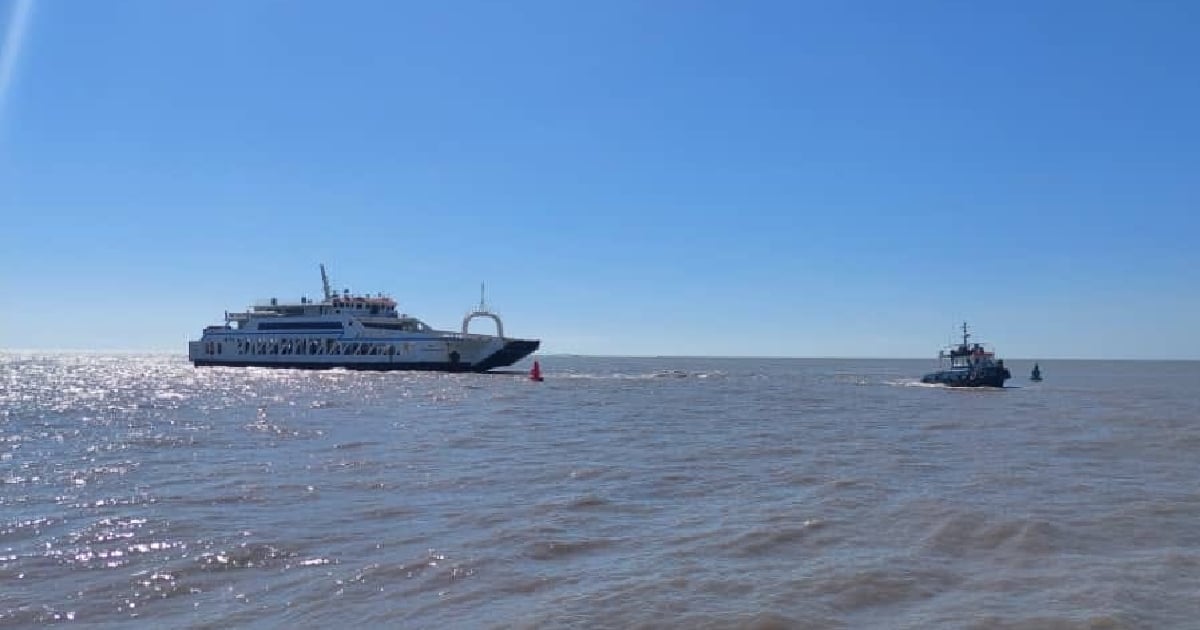After a temporary halt due to the impact of Hurricane Rafael, passenger services on the ferry Perseverancia between Batabanó port in Mayabeque province and the special municipality of the Isle of Youth resumed this Sunday. Eduardo Rodríguez Dávila, the Minister of Transportation, announced the successful docking of the ferry at Surgidero de Batabanó via social media, marking the restoration of maritime travel between these ports following the storm.
"Precautionary measures were in place to ensure the ferry docked without its engines running, preventing damage to the propeller and rudder from potential impacts with the seabed," the minister explained. He noted that the docking maneuver, which took about half an hour—longer than usual—was assisted by a tugboat as planned. "All 410 passengers have disembarked, and the ferry is scheduled to return to the Isle of Youth in a few hours," he added.
Coordinated Efforts in Docking Procedure
Rodríguez commended the "skill and coordinated actions" of ferry captain Cristóbal Jorge Gómez and tugboat captain Juan Rafael Ameijeiras, along with their crews, for resolving a minor grounding issue that occurred near the dock. He emphasized that special measures were adopted after divers from Antillana de Salvamento and experts from GEOCUBA conducted an underwater inspection to assess sediment accumulation in the port's entrance channel caused by the hurricane.
The transportation minister assured that the experience from this initial journey post-hurricane will undergo a "thorough review" by maritime safety experts. This analysis aims to decide on measures to "prevent accidents that could endanger passengers and damage this critical transport mode."
Restoration of Batabanó Port Operations
Earlier, Rodríguez had announced that Batabanó port had resumed operations after disruptions caused by the hurricane. The port had been temporarily closed due to the "loss or displacement of some buoys" due to the storm, which had halted passenger travel to and from the Isle of Youth. He credited the state-owned GEOCUBA and other entities of the Maritime Port Business Group (GEMAR) for swiftly repositioning the buoys and restoring port functionality, enabling the ferry's docking at Surgidero de Batabanó on Sunday afternoon, thus reopening the connection with the Isle of Youth.
Hurricane Rafael's Aftermath in Cuba
Following the hurricane, the Perseverancia returned to the Las Casas River in Nueva Gerona "without any damage," according to the minister, after being sheltered in the La Siguanea inlet during the storm. Shortly after the meteorological event, Rodríguez assured via social media that the ferry, three catamarans, and the Isle of Youth port were in "positive condition." He confirmed that neither the Gerona port nor the vessels docked there suffered significant damage despite the hurricane's proximity to the special municipality.
Hurricane Rafael, the second storm to hit Cuba within just over two weeks, delivered a severe blow to the nation, already grappling with a prolonged economic crisis. The worst impacts were felt in the provinces of Artemisa and Havana, with widespread destruction of homes, buildings, and critical infrastructure such as power and telecommunications networks.
The hurricane also inflicted considerable damage on agriculture in Artemisa and Mayabeque, two of Cuba's primary food-producing regions. Particularly devastating were the losses in Artemisa, where all 9,000 hectares of banana crops were damaged. On the evening of November 6, the hurricane crossed the island's western tip from south to north, initially as a Category 3 storm on the Saffir-Simpson scale—later downgraded to a Category 2. It unleashed maximum sustained winds of 115 mph and rainfall up to 200 liters per square meter, resulting in widespread flooding and destruction.
